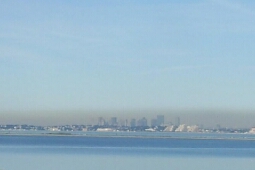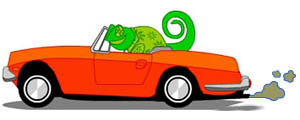Clean Air and Dirty Air (Part One)
On a clear breezy day, the air smells fresh and clean. Clean air is air that has no harmful levels of pollutants (dirt and chemicals) in it. Clean air is good for people to breathe.
On a hot day with no wind, the air can feel heavy and have a bad smell. Once in a while, the air can even make your chest feel tight, or make you cough. When too much dirt and chemicals get into the air, the air is dirty or polluted. Dirty air is not good for people to breathe.
Dirty Air Can Make You Sick
When the air has some dust, soot or chemicals floating in it, people who are inside probably won't notice it. People who are outside might notice it.
People with asthma, a disease that can make it hard to breathe, and children who play outside a lot might feel a little strange. When you are active outdoors, for example, when you run and jump a lot, you breathe faster and take in more air. Any pollutants in the air go into your lungs.
When the air is very dirty, almost everyone will notice it. It would be good if we could stop breathing on those days, but of course we can't!
How Can I Tell if the Air is Clean or Dirty?
Have you ever been stopped behind a truck or a bus at a traffic light? When it starts up, sometimes a puff of dark smoke comes out of the exhaust pipe.
At times like that you can see dirty air - it looks hazy and brownish. If your window is open, you might be able to smell the pollution. But sometimes the air can be dirty and you can't see it or smell it. So you need another way to tell if the air is dirty. This is why EPA developed the Air Quality Index, which we will describe in the "What is the AQI" section.
The Environmental Protection Agency
The environment is everything around you - the air, the land, and the rivers and oceans. The Environmental Protection Agency (EPA) is a government office that works to keep the air, the land, and the water clean. Clean air, land, and water help keep us healthy. The EPA works with state environmental agencies to keep the air clean. State environmental agencies take samples of the air at more than 1000 places in the United States to see if the air is dirty or clean.









